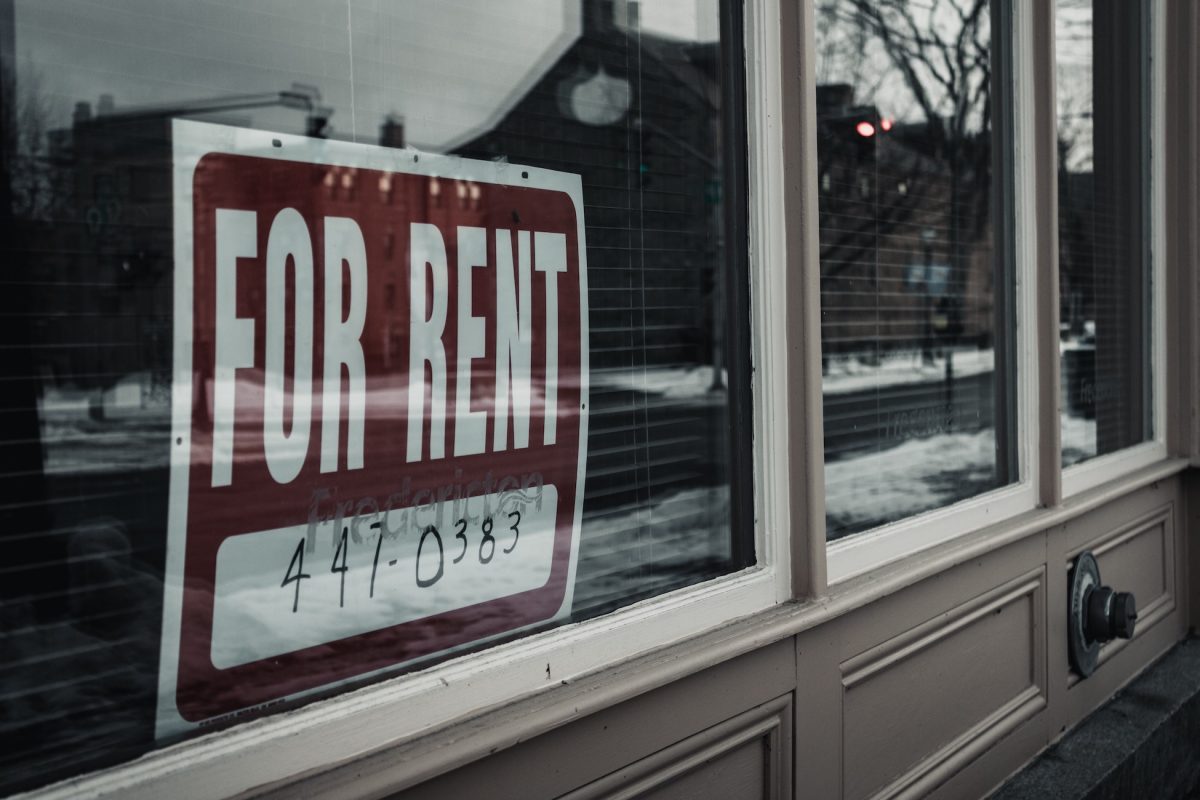Picture this: you’re on the fast track to financial freedom, visions of your dream home dancing in your head, when suddenly your loan application stops for a coffee break—enter underwriting. It might sound like mysterious accounting voodoo, but don’t worry, we’re here to break down what it means when a loan is in underwriting in a way that’s as clear as your favorite meme and as engaging as your weekend plans. Buckle up, because this is your ultimate guide to decoding the labyrinth of loan underwriting with humor, real talk, and plenty of practical insights.
What Does It Mean When a Loan Is in Underwriting Table of Contents
What Exactly Is Loan Underwriting?
The Underwriting Process: A Step-by-Step Breakdown
Why Underwriting Could Be Seen as Your Financial Bouncer
Navigating Common Roadblocks in Underwriting
How to Speed Up the Underwriting Process
Digital Tools and Modern Trends in Underwriting
Underwriting Case Studies: Real Stories from the Financial Frontlines
Resources and Community Support: Your Next Steps
Your Path to Financial Empowerment: Taking Control of Underwriting
What Exactly Is Loan Underwriting?
Let’s start at square one. Loan underwriting is essentially the ultimate quality check for your loan application. Think of it as an elite backstage pass where professionals scrutinize every detail of your financial life to ensure you’re a safe bet for lending. Whether you’re applying for a mortgage, an auto loan, or a student loan, the underwriting process analyzes your creditworthiness, income, assets, debts, and the overall risk of lending money to you.
In simple terms, underwriting is like the bouncer at the club of finance—only those who meet the strict criteria get to dance the night away. It’s not about snatching your cash, but ensuring that the loan is sound for both you and the lender.
Modern underwriting has evolved from a tedious paperwork ordeal into a dynamic, digital process. Underwriters now use advanced algorithms, data analytics, and a healthy dose of human judgment to make informed decisions quickly. So, next time you hear the term, think of it as a security checkpoint for your wallet.
The Underwriting Process: A Step-by-Step Breakdown
To demystify the process, let’s take a fun ride through a typical underwriting journey:
Step 1: Application Submission
It all begins when you submit your loan application. Here, you provide essential info such as your employment history, income, credit score, and details about the loan amount you’re requesting. The more accurate and complete your information, the smoother the process.
Step 2: Documentation and Verification
Once your application lands on the underwriter’s desk, they’ll request documents to verify your claims. This could include tax returns, bank statements, pay stubs, and even letters from your employer. Think of it like providing proof of your epic weekend adventures—only in this case, it’s about proving your financial reliability.
Step 3: The Automated Check Meets Human Touch
Thanks to modern technology, a lot of the initial review is automated. Computer algorithms crunch your numbers, flag inconsistencies, and ensure that everything aligns with the lender’s requirements. But don’t get too comfortable—this process is still closely monitored by real underwriters who make the final call.
Step 4: The Risk Assessment
Here’s where the magic (and tension) happens. Underwriters evaluate the risk associated with giving you a loan. They look at your credit history, debt-to-income ratio, and even market conditions. If your financial stats look like a well-curated Instagram feed, chances are you’ll pass with flying colors. If there are red flags, you might get a conditional approval, meaning you’ll need to provide extra info or fix certain issues.
Step 5: The Final Decision
After weighing all the evidence, the underwriter makes a call. You could get a full approval (cue the celebratory confetti), a conditional approval (a chance to remedy minor issues), or, in some cases, a denial. Whatever the outcome, this step is crucial because it sets the stage for your loan’s future.
And voilà, that’s the underwriting process in a nutshell. It might seem like a lot, but each step is designed to protect you and the lender, ensuring that the loan terms are fair and realistic.
Why Underwriting Could Be Seen as Your Financial Bouncer
Imagine trying to sneak into an exclusive party without meeting the dress code. Underwriting plays a similar role in the lending arena—it ensures you’re dressed financially to impress. The rules might seem strict, but they’re there to prevent financial mishaps for both you and the institution lending you money.
Here’s a fun analogy: underwriting is like that friend who always keeps you in check. They remind you to stay within your budget, check your foam party outfit (read: credit score), and ensure you’ve got enough cash to cover that unforgettable Uber ride home after a night out. The underwriter’s job is to protect you from overspending and falling into debt traps by making sure the loan is a good fit.
So next time you hear “underwriting,” think of it as getting your financial credentials verified before you take that next big step towards homeownership, starting a business, or affording that must-have gadget.
Navigating Common Roadblocks in Underwriting
Even the best of us encounter bumps in the financial road, and loan underwriting is no exception. Here are some familiar roadblocks and how you can overcome them with savvy strategies and a little bit of humor:
1. Incomplete Documentation
Universal truth: missing a single document can delay the entire process. Underwriters need a complete puzzle to see the whole picture. So, double-check your files, scan relevant documents, and keep your digital folder organized like your favorite streaming playlist.
2. Credit Blemishes and Errors
A dip in your credit score can be like a bad review on a dating app. Even if it’s just a minor hiccup, it can impact the underwriting decision. If you spot errors on your credit report, contact the credit bureaus to get them fixed. Better yet, build a solid financial track record over time.
3. High Debt-to-Income Ratio
This ratio is essentially your debt’s GPA. Underwriters want to see that your income isn’t totally swamped by existing debts. Lowering your debt through smart financial decisions or waiting until your income improves can turn this frown upside down.
4. Market Fluctuations
The financial market is like a mood ring—it changes with the climate. Economic downturns or sudden market changes can make underwriters extra cautious. Keeping an eye on market trends and consulting with financial advisors can help you stay ahead in this game.
Remember, obstacles are just opportunities in disguise. Tackling these challenges head-on not only speeds up your loan process but also improves your overall financial health.
How to Speed Up the Underwriting Process
So you’ve got your loan application in the system, and now you’re waiting. We get it—the waiting game is the worst, especially when your dreams are on the line. Here are some actionable tips to help speed up underwriting:
Tip 1: Get Organized Early On
A little organization goes a long way. Create a checklist of all required documents and verify everything is up-to-date before you submit your application. This proactive approach is like having your digital ducks in a row, making the underwriter’s job much easier.
Tip 2: Communicate with Your Loan Officer
Open, transparent communication is key. Build a rapport with your loan officer from the get-go. Ask questions, clarify requirements, and be responsive to any additional document requests. Think of your loan officer as your financial concierge who’s rooting for your success.
Tip 3: Verify and Correct Your Credit Report
Before you apply, give your credit report a thorough once-over. If there are mistakes or outdated information, dispute them right away. A clean, accurate credit report paves the way for smoother underwriting.
Tip 4: Maintain Stable Finances During the Process
Avoid making major financial changes—like switching banks, making large purchases, or even switching jobs—while your loan is in the pipeline. Such changes can trigger red flags and delay the final decision. Stability is your secret weapon.
Tip 5: Leverage Technology
Many lenders offer digital portals where you can upload documents, track your application status, and even communicate with underwriters. Take full advantage of these platforms to keep the process as streamlined as possible.
Implementing these tips not only minimizes delays but also positions you as a well-prepared, responsible borrower. That’s a major plus in any financial transaction.
Digital Tools and Modern Trends in Underwriting
The underwriter’s toolkit has undergone a digital revolution, marrying technology with tradition to create a faster, more efficient process. Here’s a look at how modern trends are reshaping loan underwriting:
Automation and Artificial Intelligence
Automated systems and AI algorithms now handle much of the number-crunching, allowing for near-instantaneous risk assessments. These systems gather data from multiple sources, cross-reference it, and flag any potential issues—all while you wait. It’s like having a super-smart robot sidekick ensuring everything’s in order.
Digital Documentation and E-Signatures
Gone are the days of shuffling through reams of paper. Digital documentation and e-signatures have streamlined the submission process. This not only speeds up underwriting but also minimizes errors that can occur during manual data entry.
Blockchain and Enhanced Security
Though still emerging, blockchain technology promises to enhance transparency and security in underwriting. By creating tamper-proof records of financial transactions and document submissions, blockchain can reduce fraud and ensure data integrity.
Remote Underwriting
The COVID-19 era taught us that remote work isn’t just feasible—it can be a game changer. Many lenders have transitioned to fully digital underwriting models where decisions can be made without the need for in-person meetings. This flexibility has made the process more convenient and faster than ever.
These technological advances are not just buzzwords; they’re practical tools that can help you navigate the underwriting process with confidence, efficiency, and a bit of futuristic flair.
Underwriting Case Studies: Real Stories from the Financial Frontlines
Nothing beats real-life examples when it comes to understanding underwriting. Let’s dive into a few case studies that illustrate how borrowers have successfully navigated the underwriting maze:
Case Study 1: The First-Time Homebuyer’s Triumph
Meet Alex, a millennial with big dreams of owning a chic urban loft. Alex’s financial profile was solid, but the underwriting process flagged a few minor discrepancies in his documentation. By swiftly submitting the missing tax records and maintaining clear lines of communication with his loan officer, Alex received a conditional approval that soon turned into a full approval. His experience underscores the importance of organization, prompt communication, and staying calm under pressure.
Case Study 2: Refinancing with Finesse
Then there’s Jamie, a Gen Z entrepreneur looking to refinance to secure a lower interest rate. Despite a fast-paced career and a slightly fluctuating income, Jamie’s thorough preparation—regularly updating credit reports, keeping financial records in order, and leveraging digital tools—helped demystify the underwriting process. Her successful refinancing not only reduced her monthly payments but also empowered her to invest in her growing business.
Case Study 3: Overcoming a Credit Score Setback
Finally, consider Morgan, whose credit score had taken a hit due to an unexpected life event. Facing the underwriting process with trepidation, Morgan worked closely with a financial advisor to dispute errors on the credit report and develop a plan for gradual improvement. Although Morgan initially faced a conditional approval, a commitment to timely repayments and smart financial choices eventually led to a full approval. Morgan’s journey serves as a reminder that setbacks can be overcome with resilience and proactive financial management.
These case studies demonstrate that while underwriting can seem daunting, it’s a process that, when approached with preparation and the right mindset, leads to success.
Resources and Community Support: Your Next Steps
If the underwriting process feels like navigating through a financial obstacle course, remember—you’re not alone. There’s a wealth of resources and supportive communities out there ready to help you succeed. Here are some avenues to explore:
Financial Blogs and Podcasts
Tune into expert advice from thought leaders who break down complex financial topics into digestible, engaging content. Podcasts, blogs, and YouTube channels can provide fresh perspectives and actionable tips on everything from credit scores to loan strategies.
Online Financial Communities
Platforms like Reddit’s r/personalfinance, Twitter finance threads, and Facebook groups offer a treasure trove of firsthand experiences and advice from people who’ve been in your shoes. Ask questions, share your experiences, and learn from peers who’ve successfully navigated the underwriting maze.
Books and Educational Courses
For those who love a deep dive, consider investing in books or online courses that focus on personal finance and loan management. A well-rounded education can empower you to tackle not just underwriting, but your overall financial health.
Financial Advisors and Loan Officers
Don’t underestimate the value of professional guidance. A seasoned financial advisor or a knowledgeable loan officer can provide personalized insights tailored to your specific situation, ensuring that you’re on the right track throughout the underwriting process.
As you continue your journey, keep these resources close at hand and tap into the collective knowledge of the financial community. Every bit of support and advice helps transform a potentially stressful process into a stepping stone toward financial empowerment.
Your Path to Financial Empowerment: Taking Control of Underwriting
So, what does it really mean when a loan is in underwriting? It’s a critical phase where your financial narrative is carefully inspected to ensure that your future—and the lender’s risk—is secure. But rather than viewing underwriting as a bureaucratic hurdle, consider it an opportunity. It’s your chance to bring your financial best foot forward, resolve any issues, and get one step closer to achieving your dreams.
Embrace the process with confidence. Use it as a learning experience to fine-tune your financial habits, update your documentation, and streamline your credit history. Each request for more information or small hiccup is a reminder to stay organized and proactive about your financial wellbeing.
The underwriting stage is more than just paperwork—it’s a crucial checkpoint on your road to financial freedom, whether you’re buying your first home, refinancing an existing loan, or securing funds for a major life milestone. With the right approach, you can transform the underwriting process from a source of anxiety into a strategic step toward a secure and fulfilling financial future.
So, gear up, stay informed, and let your financial savvy shine. Each document, every verified income statement, and all your proactive steps contribute to a stronger financial profile. Remember: underwriting isn’t the end of your journey—it’s just the beginning of your next big financial adventure.
Underwriting FAQs: Your Questions Answered
Check out these frequently asked questions that can help clarify any lingering doubts about the underwriting process:
1. What does it mean when a loan is “in underwriting”?
It means that your loan application is being reviewed and evaluated by underwriters to assess your creditworthiness, income verification, and overall risk before final approval.
2. How long does the underwriting process typically take?
The duration can vary widely—from a few days to several weeks—depending on the complexity of your application, the responsiveness of document provision, and market conditions.
3. Can I speed up the underwriting process?
Absolutely. Being organized, responding quickly to document requests, and maintaining stable finances can help expedite the process.
4. What are common reasons for underwriting delays?
Delays often occur due to incomplete documentation, discrepancies in financial records, or sudden changes in your credit profile during the underwriting period.
5. What does a conditional approval mean?
A conditional approval means that the underwriter has approved your loan subject to certain additional requirements or clarifications—provide the missing information, and you’re likely to receive full approval.
6. How do automated systems impact the underwriting process?
Automation helps speed up initial checks by analyzing large amounts of data quickly, but human underwriters make the final decision by reviewing flagged issues in detail.
7. Why is my credit score so important during underwriting?
Your credit score is a key indicator of your financial reliability. A high score suggests you manage debts well, while a low score might raise concerns about your ability to repay the loan.
8. Can I negotiate loan terms during underwriting?
While underwriting primarily focuses on risk assessment, open communication with your lender can sometimes help you discuss alternative terms or conditions if needed.
9. What should I do if I face a denial?
If your loan is denied, ask for detailed feedback, work on improving any weak spots in your financial profile, and consider reapplying once those issues are addressed.
10. How can I ensure a smooth underwriting experience?
Be proactive: maintain accurate records, review your credit report, and stay in close contact with your loan officer. Preparation is key to a hassle-free process.
Your Financial Future Starts Now
Embracing the underwriting process is a critical milestone on your journey to financial empowerment. Rather than dreaded delays or bureaucratic red tape, view underwriting as a rigorous audit of your financial readiness—a moment to celebrate your progress and prepare for the future.
Every document you gather, every call with your loan officer, and every verified detail on your credit report strengthens your financial profile. Think of it as leveling up in your personal finance game—a game where every smart move puts you closer to achieving your dreams, whether that’s owning a home, starting a business, or planning for future adventures.
So take a deep breath, get organized, and let the underwriting process be your gateway to a brighter, more secure financial future. With the right preparation, a proactive mindset, and a sprinkle of modern tech tools, you’re not just surviving underwriting—you’re mastering it.
Your journey may have its twists and turns, but remember that every step you take is an investment in your long-term financial wellbeing. Embrace the process, learn from each experience, and step confidently into the financial future you deserve.













